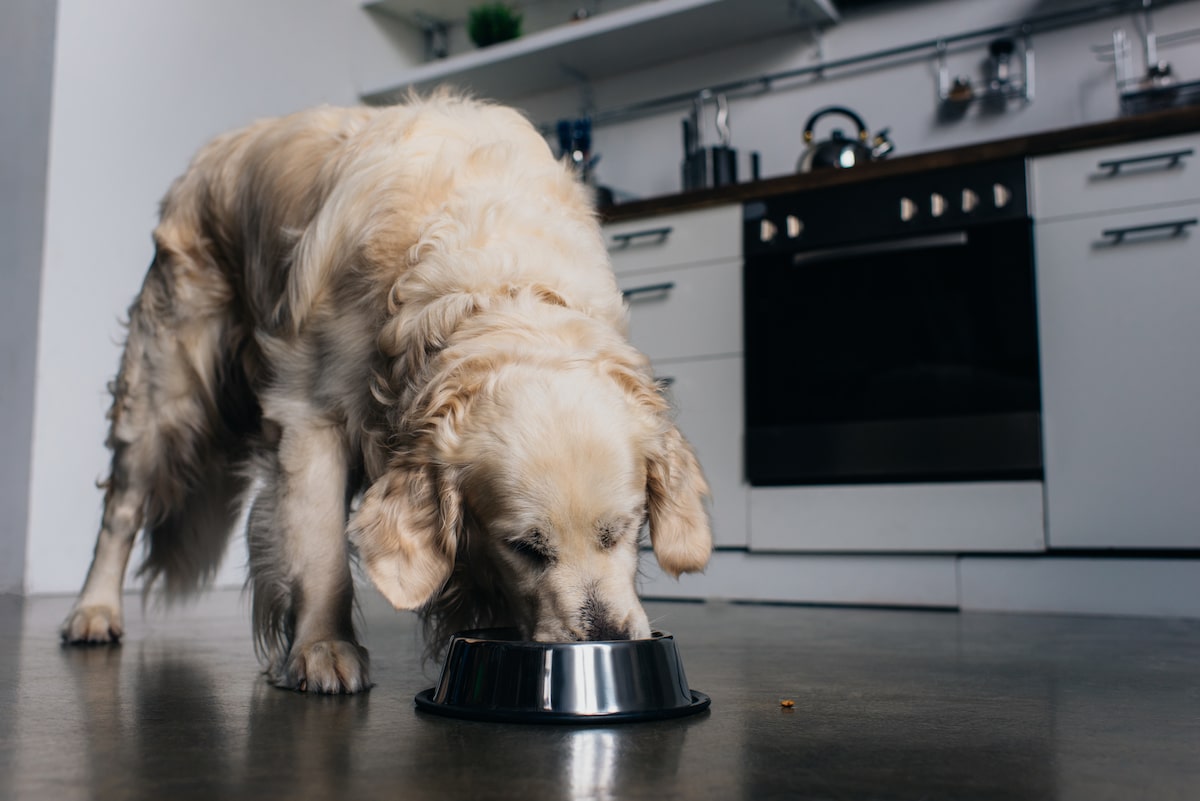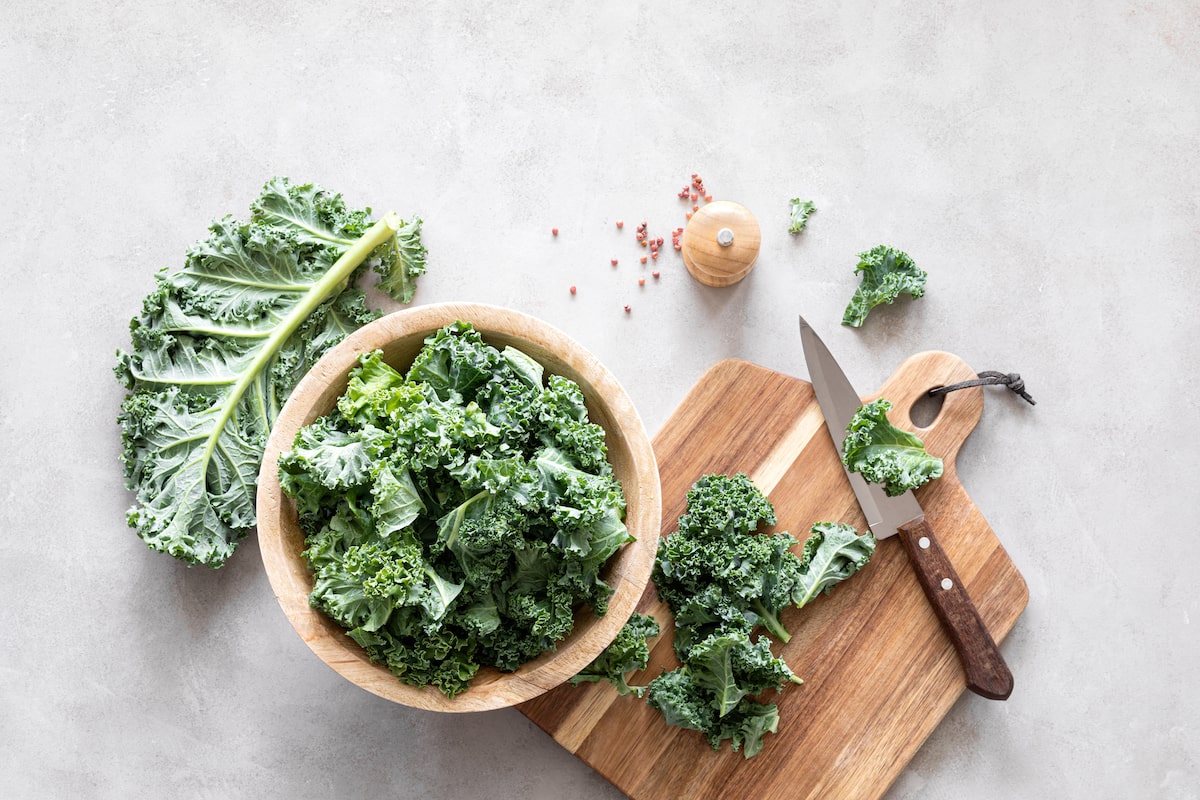Table of Contents
Kale is not only one of the world’s most popular vegetables. It’s also considered a superfood due to its dense concentration of minerals and vitamins per calorie. This has led to many dog owners wondering whether they can share these greens with their canine friends.
So, can dogs eat kale?
Yes, dogs can comfortably eat kale. This vegetable is jam-packed with minerals and vitamins that dogs typically require in their diets. It also contains antioxidants that can help to ward off various diseases.
Kale is actually one of the few vegetables that can be served to dogs raw or cooked. You can feed the greens to your pooch as a meal supplement or tasty treat. But when it comes to plant-based foods for dogs, there are always risks to beware of.
Read on for more insights into dogs and kale.
More About Kale
Kale, also known as leaf cabbage, is a vegetable that belongs in the cabbage species Brassica oleracea. The vegetable is typically grown for its edible leaves. However, some kale varieties are cultivated for their ornamental value.
Just like regular cabbage, kale plants can produce green or purple leaves. The primary difference between these plants and cabbage is that their central leaves do not grow into a head.
What Is The Nutritional Profile Of Kale?
According to the United States Department of Agriculture (USDA), a 100-gram serving of raw kale provides the following nutrients:
• Calories – 35
• Protein – 2.92 grams
• Carbohydrates – 4.42 grams
• Dietary fiber – 4.1 grams
• Fat – 1.49 grams
• Vitamin A – 4812 IU
• Vitamin K – 389.6 micrograms
• Potassium – 348 milligrams
• Calcium – 254 milligrams
• Magnesium – 33 milligrams
While these are the most abundant nutrients in a 100-gram serving of raw kale, they’re not the only ones. A similar quantity of the vegetable also contains decent amounts of water, antioxidants, and a host of other beneficial compounds.
Potential Benefits of Kales for Dogs
As we’ve just outlined, kale is jam-packed with essential nutrients. Any potential benefits of this vegetable to your dog largely comes down to the abundant compounds in it.
Below are some of those nutrients, along with their distinct roles:
1. Dietary Fiber
Fiber promotes healthy digestion by nourishing your dog’s gut microbiota. Soluble fiber, in particular, is fermented by gut bacteria. Studies have shown that increased intake of soluble fiber may boost gut function and lower the immune responses triggered by certain metabolic diseases.
Fiber also acts as roughage. The nutrient moves through your dog’s tummy undigested, carrying with it other food compounds to form bulky stools. These stool-bulking effects are instrumental in easing digestive issues like constipation and upset stomach.
2. Water
Water plays a role in all bodily functions, including offering a medium where physiological activities take place. Sadly, there will be times when your dog doesn’t drink as much water as he should. During such periods, moisture-dense foods like kale can go a long way in averting dehydration in dogs.
Water also works in combination with dietary fiber to create the sensations of fullness for longer. Together, the two compounds can help to minimize the food quantities your dog eats while also curbing appetite. This can be useful in keeping the animal’s weight in check.
3. Protein
Protein shares one thing in common with fiber and water – all compounds can help induce feelings of fullness and satiation after a meal. That makes the nutrient another great recommendation for dogs battling weight problems.
However, protein is probably best known for its role in the development of muscles, organs, tissues, and bones.
4. Vitamin K
Kale is one of the world’s best natural sources of vitamin K. The vegetable is especially high in vitamin K1, which is also known as phylloquinone.
Phylloquinone supports blood clotting processes. The vitamin, alongside other nutrients like calcium, is also essential in the development of healthy bones.
Foods rich in vitamin K1 can be particularly useful for dogs that have been in serious accidents or those recovering from surgical procedures. Your pooch could also benefit from phylloquinone if he’s battling degenerative bone diseases like osteoporosis.
5. Magnesium
Magnesium is involved in the transportation of electrolytes like potassium, sodium, and calcium into your dog’s cells.
Electrolytes help in maintaining the nerve signals and muscle contractions of all organs, including the heart.
6. Antioxidants
Kale boasts a decent concentration of all essential antioxidants. Antioxidants are compounds that lower the risks of chronic diseases by preventing oxidative damage to cells caused by free radicals.
The following are examples of powerful antioxidants in kale and their respective immune-boosting properties:
• Vitamin A – Improves your dog’s vision and cognitive functioning, while also nourishing his coat and fur
• Vitamin C – Decelerates the aging process while also flushing out toxins from body cells
• Flavonoids – Combat inflammatory diseases like cancer, metabolic disorders like type 2 diabetes, and cardiovascular conditions like heart disease
• Glucosinolates – Also contain anti-inflammatory properties which might help to mitigate severe immune responses to inflammatory conditions
• Chlorophyll – Nourishes red blood cells, fights blood disorders, and prevents kidney stones
What Are the Risks of Feeding Kale to Dogs?
Despite its numerous health and nutritional benefits, kale may also pose some adverse effects to your canine friend.
For starters, kale is high in thallium. Thallium is a natural compound in many green plants. The chemical plays a crucial role in the healthy development of kale plants. However, kale has a notorious reputation for being a hyperaccumulator of thallium, and excess consumption of this compound could lead to thallium poisoning. Common symptoms of thallium poisoning include trembling, seizures, high heart rate, fever, and even death. The only saving grace is that the thallium content in kale is usually too insignificant to cause severe medical problems in dogs. Even so, you want to tread with caution while feeding these veggies to your pooch.
Kale may also affect your dog’s thyroid glands. This is especially true for raw kale. Raw kale contains goitrogens, compounds that inhibit the absorption of iodine into your dog’s body. Iodine deficiency is associated with a dysfunction of the thyroid glands. It’s for this reason that experts advise against feeding raw kale to dogs with hypothyroidism.
Calcium oxalate stones is another notable danger of feeding kale to dogs. When calcium oxalates get to your dog’s body, they can clump together to form kidney and bladder stones. Again, your dog is unlikely to suffer from calcium oxalate stones if he only consumes kale occasionally. However, dogs that have suffered from calcium oxalate stones before are likely to experience the same problem in the future. The chances of developing calcium oxalate stones also depend on your dog’s breeds, with the following breeds considered most at risk:
• Miniature Schnauzers
• Shi Tzus
• Yorkshire Terriers
• Lhasa Apsos
• Bichon Frises
The following are other potential risks of kale to dogs:
• Isothiocyanates – Associated with gastric irritation and diarrhea
• Allergic reactions, especially to dogs that are already allergic to cruciferous vegetables
• Blood sugar issues caused by the relatively high carbohydrate content in kales
Should Dogs Eat Raw Or Cooked Kale?
As we mentioned at the beginning, kale is one of the few vegetables that can be served to dogs either raw or cooked.
Raw kale provides a maximum number of nutrients, including those that would otherwise be destroyed by cooking. However, there are precautions to consider.
First, raw kale may be contaminated with pathogens. Therefore, it’s important to wash the vegetable carefully before feeding it to your pooch.
Raw kale also presents choking hazards. You can minimize choking risks by chopping the vegetable into smaller, manageable portions.
There’s also the taste aspect. Unless flavored with another ingredient or mixed into your dog’s regular diet, raw kale may prove too bitter for your pooch to enjoy.
Lastly, as we’ve hinted in the section above, raw kale could cause thyroid issues for your dog.
Fortunately, there’s always the option of cooking kale before sharing it with your canine companion.
Cooking destroys all pathogens in raw kale. It also makes the vegetable tastier and more digestible, while also deactivating antinutrients like goitrogens.
The best way to cook kale for dogs is to boil or steam the vegetable in plain water over medium heat. You want to denature all harmful compounds while still keeping essential nutrients intact.
But whichever way you choose to prepare kale for your dog, always remember the cardinal rule of moderation.
Conclusion
Kale is safe, healthy, and nutritious for dogs. But only if served in moderation.
Like all plant-based foods, excess consumption of kale could make your dog sick.





